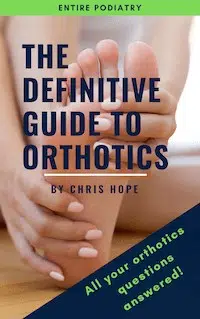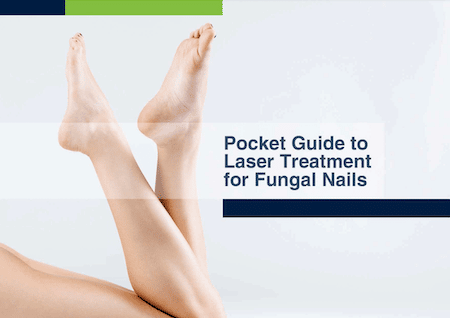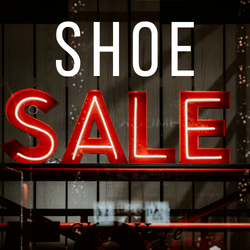The Complete Guide to Ingrown Toenails
What is an ingrown toenail?
An ingrown toenail occurs when the sides or top of the toenail grows into the skin around the toe. It usually affects the big toenail but can occur in any toe. An ingrown toenail can range in severity from a mild pain or annoyance when pressure is applied to the nail to a severe ingrown toenail which can be extremely painful and can make walking and wearing shoes unbearable.
What causes ingrown toenails?
Ingrown toenails have many different causes. The shape of your nail may predispose it to becoming ingrown. We often hear that ingrown nails ‘run in the family’. This is because the shape of your toenails can be inherited. For example, some people have toenails that are ‘fan shaped’ i.e. the nail becomes broader towards the top of the toe. This nail shape is prone becoming ingrown as the wide nail plate can easily push into the surrounding skin. Other people have toenails that are naturally involuted or ‘curly’. The edges of involuted nails tend to curve around and can push into the skin.
Ingrown nails can also develop following an injury to the toenail. Stubbing your toe can push the nail into the skin causing an ingrown toenail. After a bad injury the nail may fall off completely. As the new nail grows it may potentially grow back ingrown, and you may require a podiatrist to remove the ingrown aspect and have the nail cut in such a way to ‘train’ it to grow out correctly.
Wearing shoes, socks or stockings that are also too small or too tight can push the nail into the skin leading to an ingrown toenail. Frequent use of high heel shoes that place extra pressure at the toes may also cause ingrown toenails.
A fungal infection of the toenail may change the shape and the thickness of your toenail. This alteration in nail growth can also lead to the development of an ingrown toenail.
What causes chronic or recurring ingrown toenails?
Thankfully, most ingrown toenails are fixed after a single visit to a podiatrist. However some people will suffer from recurring ingrown toenails returning on a regular basis. Even after the ingrown aspect of the nail is removed, certain stubborn and chronic ingrown toenails will grow back into the skin in such as way that ingrown toenails seem to be inevitable. Surgical removal may be required in these cases to provide permanent relief.
Ingrown toenail symptoms
The first sign of an ingrown toenail may be mild discomfort when in shoes or when pressing the side of the nail. Other signs and symptoms of an ingrown toenail include redness around the side of the toe near the nail, fluid such as pus or clear liquid leaking from the side of the nail or swelling of the toe. These signs may indicate the start of an ingrown toenail. If the ingrown toenail is left untreated and the severity worsens the pain may radiate up your toe to your foot and can cause foot pain.
Infected ingrown toenail
Ingrown toe nails are particularly prone to infection. Once this infection takes hold it can lead to a very painful ingrown toenail.
We are able to treat ingrown toenails of all severities. If you believe your ingrown toenail is infected we recommend that you make an appointment with Entire Podiatry as soon as possible to initiate appropriate treatment promptly. An untreated infected ingrown nail can worsen very quickly and the infection can spread at an alarming speed.
As soon as you notice that your ingrown toenail is looking infected it is best to begin soaking your feet in a medicated footbath to assist in resolving the infection. This can be done easily at home by mixing either a capful of betadine solution or a handful of Epsom Salt with lukewarm water in a bucket or foot spa and bathing your affected foot for up to 5 minutes twice a day. We also recommend you keep the toenail covered with a topical antiseptic cream and a suitable dressing/band aid to protect the toe from further injury and from germs.
An ingrown toenail is similar to having a splinter caught in the side of your toe. In order for the infection to clear and for the pain to resolve the podiatrist must remove the piece of nail that is digging into the toe. Once this nail is removed, most people are able to heal fine without the use of antibiotics. However the podiatrist will always assess the severity of the infection as well as your broader health and will advise if they believe antibiotics are also required in addition to their podiatry treatment.
If you are unsure of the best course of action for your infected ingrown toenail you are always welcome to give Entire Podiatry a call or email. We are always happy to speak to your before your appointment to guide you in the right direction for the most appropriate treatment.
Double ingrown toenail
Ingrown toenails may affect one or both sides of the toenail. Treatment is generally the same if one or both sides of the toenail are ingrown. If you are considering surgical intervention for your ingrown nail, we are able to treat both sides of the nail during the same appointment.
Ingrown toenail treatment
How to cut an ingrown toenail
If you have an ingrown toenail we strongly recommend you make an appointment with a podiatrist to have this cut and removed safely and correctly. If you attempt to cut or remove the ingrown nail yourself it is very easy to accidentally worsen the problem. Home DIY treatments often lead to infections.
Podiatrists frequently need to perform ‘fix-ups’ after someone has tried to treat their ingrown nail themselves. It may be possible to remove the visible aspect of their ingrown nail themselves, and this can provide some relief, giving a false sense of security! But then the deeper part of the ingrown nail that was not visible is left to grow deeper into the skin, worsening the problem.
At Entire Podiatry we have specialised tools to carefully remove the entire ingrown aspect of the nail and ensure no spikes or rough edges are left behind.
If you are prone to ingrown nails then correctly trimming your toenails is particularly important. It is recommended that you do not cut your nails too short and that you cut the nails relatively straight across rather than cutting down the sides of the nails.
What doctor treats ingrown toenails?
At Entire Podiatry all of our podiatrists are fully qualified and experienced in the treatment and management of all types of ingrown toenails. If you are looking for an ingrown toenail podiatrist in Brisbane then contact Entire Podiatry today to make an appointment.
Toenail removal
It is not common for the entire toenail to be removed in order to manage an ingrown toenail. However there are certain circumstances where complete removal of the toenail may be required. The most common situation where an entire nail needs to be removed is if the nail has been severely injured. After a bad injury the toenail may start to lift and detach from the nail bed. It may be best to have the nail removed by a podiatrist in a controlled environment rather than risk the nail potentially catching and ripping off.
If your nail or part of your nail does require removing, our podiatrists are experienced in providing lifelike, Keryflex nail restorations. Read more about Keryflex replacement nails.
Your podiatrist will be able to assess your nail and advise you on the best course of action.
What are the costs to treat an ingrown toenail?
The cost will vary depending on treatment. If no anaesthetic is required and conservative treatment to trim back the affected nail is all that is needed, then that is included in the cost of your consultation.
If however, you require anaesthetic or surgery to remove part or all of the nail, the cost does vary. Please see our standard consultation pricing and toenail surgery pricing on the Entire Podiatry Pricing page.
Continue reading about ingrown toes:
- Recognising the signs of an ingrown toenail
- Preventing ingrown toenails: Cutting your toenails correctly
- How to treat ingrown toenails
- What is ingrown toenail surgery?
- Ingrown toenails during pregnancy
- What to do if your baby or toddler has an ingrown toenail
- What is a medi pedi or medical pedicure?





